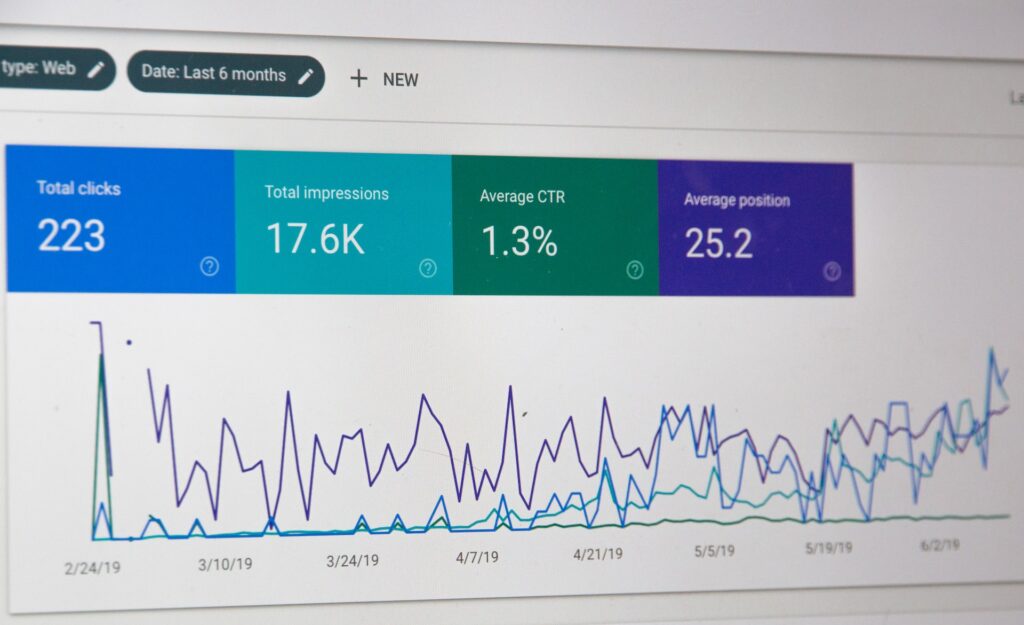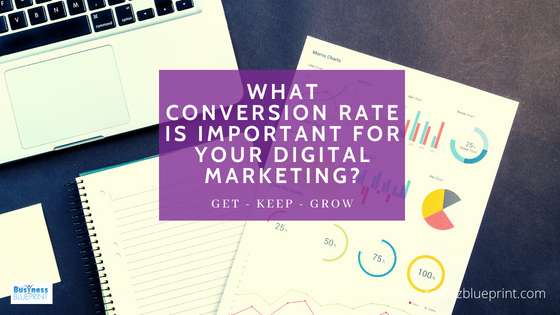Most people define Conversion Rate as the percentage of site visitors who do something the company that owns the website wants them to do. To submit an order, sign up for an email, send a lead etc.

The logic is: if your conversion rate is 2.2% and if you increase it by 1.00% you will make substantial money.
Let’s look at this:
You have 1000 visitors per month
Conversion Rate 2.2%
Ave Order $200
Sales = $4,400
You have 1000 visitors per month
Conversion Rate 3.2%
Ave Order $200
Sales = $6,400
Here you have increased your sales by 45% without spending any money and by purely focusing on improving your conversion rate. You also have improved your profitability
This is why there is such a focus on conversion rate.

You should stop obsessing about conversion rate
The reasons for this are:
#1 Overall site conversion rate (non-segmented) for your site is a nice-to-know metric but it is quite meaningless in terms of its ability to truly communicate actionable insights.
You got 100 visitors, 2.2 of those converted, where do you start to look for what the heck happened? What did the other 97.8 visitors do? Do you know?
#2 A minority of visitors that come to any website come to buy (minority defined as usually less than 50% of site traffic).
So if a minority of people come to your website to buy why should we obsess about Conversion Rate?
Is your relentless focus on conversion rate being negligent towards those other website customer segments?
The question is: If you solve for conversion rate are you solving for all your traffic and are you improving the website experience for all your customers?
Answer: No
You are giving a poor experience to all your website visitors with this focus.

What are you missing if you only focus on conversion rate?
#1 Customers who will come to your website to “research”, product specific.
They will never buy from your website, maybe if you do an awesomely kick-butt job on the website maybe you will convert them but it is highly unlikely. An example of this is do you use Amazon to primarily read customer reviews or watch new shows or want to read specs or print web pages with product information.
#2 Customers who will come to your website to “learn” about you, the company.
They are looking for jobs, they are looking for press releases, they are looking for your company founders bio, they are looking for why you exist, they want your blog, they want to unsubscribe from your emails etc.
#3 Customers who come to our websites for “help”.
This is people looking for support or looking for driving directions to your office or they want to send you a nasty email or register their product etc.
#4 Customers who come for reasons that we don’t know simply because we simply never bothered to ask (this is huge by the way).
All these segments, and there may be different ones for your website, will never buy from you.
All these segments are not static, they change based on market conditions, based on actions your company takes (say campaigns or branding etc), based on stuff your competitors do etc etc.
Obsessing about conversion rate means:
- A focus on the 20 – 40% of the traffic on your website that is “in the game” and solving for just that minority.
- That you are implicitly ignoring major parts of the traffic that you should be creating optimal customer experiences for (pages, content, whatever).
- You solve for the short term, the now, and just Submit Order, at the cost of solving for long-term metrics like creating Net Promoters.
Every website should be built with business objectives in mind.
This may include providing information, creating leads for your company, or selling products.
Measuring the number of visitors that complete a desired action on your site is referred to in the industry as a conversion.
Understanding the conversion rate (website visits/number of conversions) of your website helps you to gauge the value of your website as well as the success of the numerous campaigns that are driving traffic to your site.
As a business owner you need more insightful data and soon understood the only way to improve your website was to understand exactly what users were doing.
This included measuring things such as how long users spend on site/pages, what pages they visit and also bounce rates for example.

Understanding conversions
The problem with conversion rates for these types of conversions is that this figure alone can be distorted.
Due to the fact that only a minority of visitors actually come to your site and convert, this represents a limited number of outcomes for your business.
There is no doubt that conversions should be measured, but as they represent a small proportion of the website traffic it means that the bigger picture can be missed.
The rest of the traffic to the site who weren’t successful in converting can ultimately be where the most valuable insights can be found.
That is why it is important to have both macro and micro conversions – the premise behind this approach is designed to combat the issue by only focusing on a small proportion of your traffic that is converting and allowing you to see the bigger picture.
Macro Conversion
A macro conversion is a primary conversion on a website, for example, a completed sale on an eCommerce site or a completed lead generation form.
Micro Conversion
A micro conversion relates to smaller engagements such as a newsletter sign-up or a user watching a product video. Micro conversions can often precede macro conversions.
Measuring micro conversions opens up the amount of potentially meaningful data you have at your resource meaning that more insights are likely to be found. Micro conversions as a single entity may well be smaller than a single macro conversion, however clubbing your micro conversions together with your macro conversions will be more valuable to you than a single macro conversion.
The first step to achieving a broader look at your website data is to define what macro and micro conversions are present on your website.
The only way you can truly do this efficiently is to look at your website and look at the key engagements and interactions users can partake in.
This could bring up a whole range of things such as a completed sale, social sharing or newsletter signups for example. You can also include engagement metrics such as users who have visited more than five pages or users who have spent more than five minutes on your site.
Micro conversions are activities that lead your customers towards the larger goal, that is, macro conversion.
Micro Conversion is an action or a set of actions that strongly indicate a user progressing towards profitable action on your website.
Common micro conversions might be:
- A newsletter sign up
- Adding products to a cart
- Downloading an eBook or white paper
- Subscription to RSS feed
- Visiting specific pages, for example, the product page, category page, features page, and so on
Conversion rates suffer when sites fail to drive customer micro-actions and maintain momentum through the sales path. Once the path is defined and each of the micro-actions described, you can work on optimizing the most effective call to action for each step.”
Micro conversions are opportunities to patch up holes in your sales funnel, and in the process, increase your macro conversions and revenue.

You could divide micro conversion into two functional categories.
Process Milestones – these are the conversions that tend to lead to a primary macro-conversion. Monitoring these will help you define the steps where UX improvements are most needed.
Secondary Actions – there aren’t primary goals of the site, and they aren’t linearly related to the primary conversion. They are, however, desirable actions that usually indicate a potential future macro-conversion.
It’s beneficial to track micro conversions for the reasons stated above. It offers a holistic picture of your user experience, and it allows you to break down which parts of your website are stopping points.
Forming test hypotheses specifically to increase pageviews per user is different than analyzing that piece of data in correlation with the overall revenue per visitor per segmentation.
Another reason tracking micro-conversion is important is that not all of your visitors convert the first time.
Let us say you have a website with a conversion rate of 1.50%:
Not bad, but if you are tracking micro conversions that lead up to a final conversion or build brand credibility (registrations, members publishing articles, people who sign up for premium content, and people who sign up for announcements):
Then this represents a more holistic picture of the health of the site.
Micro conversions provide essential visibility into the holistic user experience. Focusing solely on macro-conversion measurement risks adopting only design and content changes that result in instant, large shifts in conversion rate.
These shifts are often short-lived. Sites that optimize for long-term returns need to focus on all the components that provide a positive user experience and business return over time.
Given that micro-conversions make up such a large percentage of the activity on a website, they can provide a lot of insight into what you’re doing right – and what you’re doing wrong.
Tracking micro conversions will allow you to finetune your website and help you to increase the rate of your macro conversions.
Low-traffic websites are especially vulnerable to the effects of poor UX, so micro-conversion tracking can be particularly useful.
When visitor numbers are low, it’s important to make the most of each and every person browsing your site – and analysis of micro-conversion statistics might be the difference between a bad week and a great one.
Tracking secondary actions will allow you much greater insight into how well you’re engaging your website’s visitors.
If plenty of users are opening accounts with the website, but are opting out of newsletters, you might want to think about why your marketing isn’t connecting in the way you’d like.
Tracking views and engagement with the blog and video posts will allow you to quickly discover exactly which topics people are most interested in – and to stop wasting resources creating content that isn’t having the intended impact.
Every business has critical numbers. These numbers measure the actions that lead to sales and revenue. They are the numbers that determine the performance of your business.
Make sure when you measure your website that you are actually measuring those critical numbers that will impact your performance.




